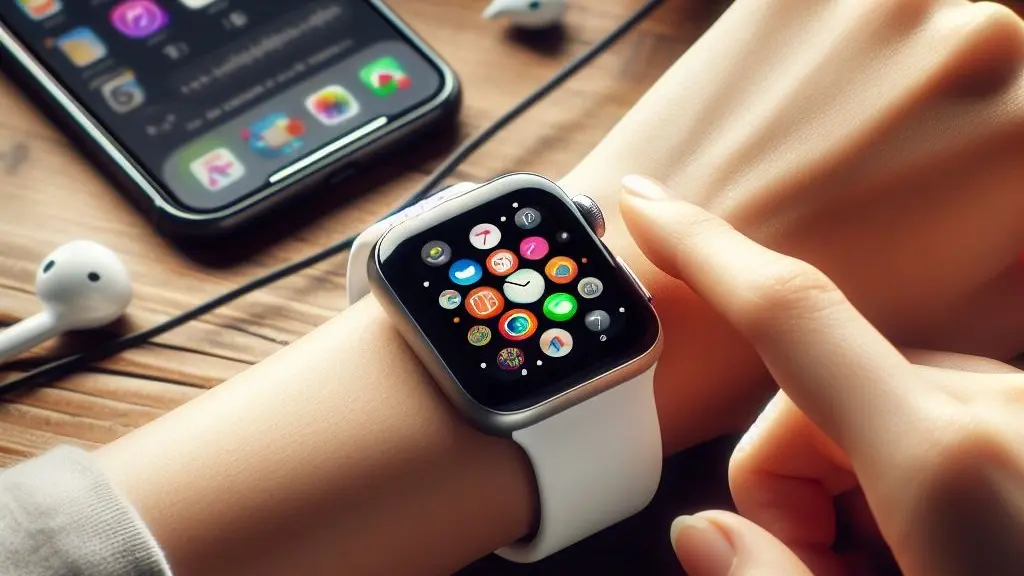
Smartwatches are on the rise. Many people have fallen in love with their obvious usefulness in keeping them in good physical shape, but they also serve to be fashionable. Therefore, we assure you that if you do not yet have one, you will be more than satisfied with your purchase.
However, it’s worth taking some time to carefully consider which features are really important to you. Below, we present a guide with the aspects you should take into account when choosing a smartwatch.
OS
The type of operating system does not determine its capabilities, although it is a very important aspect depending on the type of information you plan to record with the watch and the level of association with your smartphone.
The main operating systems for smart watches are: Apple’s WatchOS exclusive for iPhone, Google’s Wear OS that works best with Android, Samsung’s Tizen OS and Fitbit OS. Therefore, choose the one that best integrates with your phone and other devices such as cycle computers and their sensors.
Design, size and weight
Not all people have the same wrist size. Fortunately, smartwatches come in a wide variety of designs, materials, sizes, and weights. Small, light models like the Apple Watch are better suited for delicate wrists and can be considered unisex, while larger and heavier ones are more suitable for people who do intense workouts and extreme sports.
There are also those with a circular screen like the Samsung Galaxy Watch, more oriented towards sports, versus the rectangular ones, which are more classic in style, but in both cases, you can have customizable screens as many times as you want. Ideally, you should try them in person to see which one you feel most comfortable with.
Screen quality
A good screen is essential in a smartwatch, and the larger it is, the easier it will be to interact with the information that the device displays or records.
Choose displays with high-resolution OLED technology with vibrant colors, better viewing angle, high maximum brightness of 500 nits or more for use in the sun, and protection against scratches and impacts. Also, consider whether you prefer a full touch screen or a rotating bezel and physical buttons.
Connectivity and sensors
Virtually all modern smartwatches connect via Bluetooth 5.0 LE to your smartphone to transmit notifications, sync activity, and use advanced features. Some models also include built-in LTE/4G connectivity to make calls, receive emails and use apps without having to have your cell phone present after setting up a data plan.
As for the sensors, it is common for them to incorporate GPS, altimeter, barometer, heart rate monitor and a blood oxygen level meter.
Performance and storage
If you plan to use it demandingly, it may be worth choosing a smartwatch with a more powerful processor, more RAM, and better internal storage space. This way you can enjoy a more fluid experience and be able to install more apps, as well as save songs and brand records on the same watch.
Models equipped with Wear OS and WatchOS typically require faster processors.
Battery life
On average, the battery lasts between 1 to 3 days before needing to be recharged. If you plan to use it to measure your physical effort in outdoor sports disciplines with the GPS or heart rate monitor activated, the duration will be reduced.
If you want greater autonomy, there are models like the Amazfit GTR 4 that last up to 12 days on a single charge. Although there are also options like the Garmin Fenix 7S Solar that uses solar energy to recharge its battery, offering autonomy of up to 14 days.
Fitness and health features
All modern smartwatches have basic fitness tracking features such as step counting, distance traveled, calories burned, and 24-hour heart rate monitoring.
Some more advanced models are focused on specific sports such as climbing, mountaineering, swimming or cycling, so they must integrate GPS, altimeter, barometer to record precise metrics of such activities. They can also measure stress levels, sleep quality and SpO2.
Waterproof
If you plan to use your smartwatch for water sports, it is essential to check its water resistance before purchasing. Most can withstand splashes, rain, and sweat, but few are designed to be completely submerged.
The Apple Watch Ultra and later models support recreational diving up to 40 meters deep, while the Garmin Quatix 7 is water resistant to a depth of 100 meters.
Budget
Finally, consider your budget. There are excellent smartwatches that fulfill all day-to-day functions and have an excellent quality-price ratio, as is the case with many models from Amazfit and Huawei, with prices that fluctuate around $100.
The same does not happen with the premium range of Apple, Samsung and Garmin, which have higher prices, but display better features and capabilities. In conclusion, by knowing how you plan to use your smartwatch and the features you really need, you will be able to choose the ideal model that suits your lifestyle.